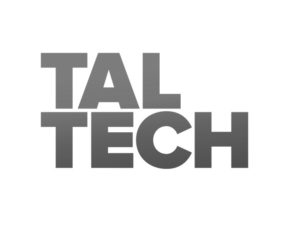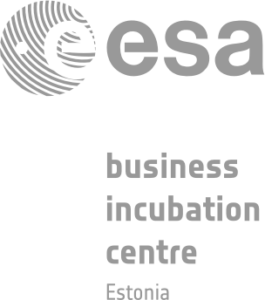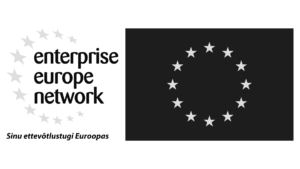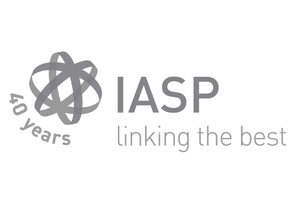15.12.2020
Etienne Garbugli: E-mail Marketing is About Understanding Intent
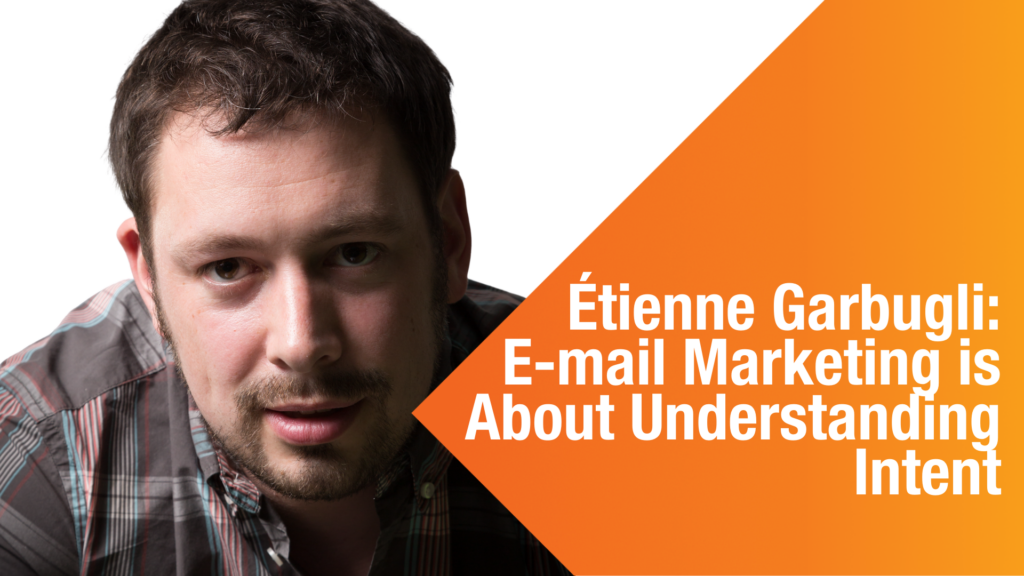
On November 24th, Tehnopol Startup Incubator hosted a B2B email marketing workshop for the incubants. Etienne Garbugli from Canada, author of “Lean B2B”, “The SAAS Email Marketing Playbook” and “Solving Product”; a three-time startup founder and a five-time entrepreneur shared his tips on how to better market products or services to other businesses.
What drew you to writing, consulting and the startup world?
At that time, it was exciting that suddenly you could do whatever you want with technology. It’s that drive of changing the world – you’re suddenly in a position where you can do pretty much everything.
After my second startup, I decided I was going to try and educate myself. I spent a year interviewing founders that had succeeded in B2B. I spent a lot of time reading everything that was available and ended up writing a book based on that, which I think is a great way to learn, but at the same time do something with the learning and share it back. I was very pleasantly surprised with the response. That gave me a different perspective on things as well as it got me to work with a bunch of different startups.
You have been working in both B2C and B2B marketing. How do you think that both of these fields have changed since you first entered marketing?
I think initially, things were very much one size fits all. I remember we were doing e-mail marketing campaigns for a bunch of people whose names or location we didn’t even know. We would try to push a product, a different campaign or different concepts on them. It worked or it didn’t work – we didn’t necessarily know what happened specifically to the segments. I think the idea of really segmenting different types of business was there, but most companies were not necessarily doing it.
Gradually there’s been this evolution of how by better understanding the types of people within your list, you’re better able to craft the right types of messages and the right types of offers. I think that’s evolved more on the B2C side. On the B2B side, depending on the type or size of businesses, it also went into a deeper understanding of the buyer’s and customer’s journey, as well understanding the inner dynamics in the target organisation.
Overall, the entire marketing industry has changed a lot over the last 10 years, because social media, among other things, has transformed it quite a lot. What do you think is the role of email marketing at a time when social media marketing is much more popular?
I think what’s so great about email with regard to social media, is that there’s a level of communication that is more personal. Depends what you include in social media marketing, but there’s a level of personalization and one-to-one-ness that is greater with e-mail.
I think one of the core things as well with email is that you own the relationship, so to speak. Whereas a lot of companies are struggling with Facebook, because they force companies to pay to play, they get less visibility among their own audiences, because Facebook wants them to pay and that’s happening on LinkedIn and other platforms as well, gradually.
I think email in that sense has become a more reliable way to reach your audience as well as craft and control the messaging. Beyond that, I think it’s a way more effective medium, because there’s a lot of stats that you can look at that tell you the ROI with email. Plus, I’m seeing a lot of revitalisation of the value of email – repopularisation of newsletters is really becoming a thing. I think people are realising more and more that being able to have a direct relationship is a very valuable thing because it increases the stability of your business model.
Do you think companies and organisations have realised that e-mail enables to approach audiences more individually? Do you think they’re using e-mail marketing to its fullest?
I do think there’s still a gap in terms of understanding how much you can actually tailor your communication to the audience or just specific people within your list. If we want to talk about the evolution of e-mail marketing specifically, then that’s exactly that. It’s what you can do today based on the type of data that exists. The tools that are available at your disposal are 60 times more advanced than what it was when I was starting out. But a lot of people still, for lack of knowledge, desire, time or whatever, are closer to what people used to do.
Could you bring out some myths about e-mail marketing?
Well, I think part of the struggle is that people view whatever list they have as just that. They view people as one entity, and not as a bunch of different individuals on their list, with different facets, realities, contexts and understandings. A lot of people will start approaching them, thinking that the more e-mails they send, the more chances they have to get the customer to do whatever they want. What they don’t realise is that a better understanding of the context of what people are trying to achieve or where they are, will actually allow the marketers to understand whether that can work at all. Even when we’re talking about technology products, if you are forcing people to use your product so hard that people just use it because they want to get rid of you, it’s not going to lead to the positive outcomes, because chances are, they’re just going to stop using your product after they try it or they’re just going to move on and not see the value. I think the idea of sending a lot of e-mails or acquiring lists is a crutch to understanding the people on your list and adapting to their reality is really a cop-out for the real work that you should be doing in terms of understanding the people in your audience.
How do you think that e-mail as a communication platform has changed over the last 10 years?
If you’re looking at e-mail marketing, I think it’s a little bit like how train systems have developed, to some extent. Initially, people maybe built one train station in Tallinn and one in Tartu. They assumed people get to the train station, catch their train and that’s it. But over time they realize that not everybody wants to go specifically to Tartu and there are cities in between, where people might want to get off.
Also, when people get to Tartu, they don’t all want to go to this train station. They also need to go to different places within the city – the network expands. And then, gradually, it’s also about understanding how people get to the first station in the first place. How do people get to the Tallinn train station? If you view this as a trajectory, where people come into your e-mail program with different states of knowledge and backgrounds – I come from this specific city I got here that way, I want to get off at that specific place. This is what people wanted to do back then, but they were at that one size fits all model, where you get on the list – I treat you the same way as everybody else on the list. It didn’t matter whether you had bought my product before, have a lot of knowledge about the organisation, you’re just browsing or you want to buy. They were trying to push people to Tartu no matter what they were trying to do.
And then, gradually, we started to get companies that were doing more. We have people from different cities that want to get to Tartu. We use different paths to get people to Tartu, but with different origin points. Gradually it evolved into a situation, where people want to get off at different stations. There are different objectives that e-mail marketing was able to cater to and adapt.
Gradually people understood that people don’t always necessarily want to go to Tartu – there are different destinations and objectives. When people get on your e-mail list, they all have this context that’s completely different. This impacts what they’re trying to achieve, but also impacts which outcomes they seek from your company. I think as it evolved, people got better at understanding and responding to what people are trying to achieve.
Marketing automation is better at helping people achieve different goals with e-mail marketing. I think the evolution now is even more going up front about understanding intent, why people are thinking about taking the train in the first place, why people are signing up to your e-mail list and then using that as a way to drive the best path to your destination. I think now it’s even more about understanding intent and using that as a way to dictate the relationship – taking a bunch of different people at different stations in your network and getting them to the places they want to get.
How do you think email will develop in the future?
I think right now what you’re already seeing is that there’s a big gap between the people that do this well and people that don’t – some are doing personalised marketing beautifully – overperforming – and some far from that – underperforming.
I think the ability to create a personal one-on-one experience that takes into consideration who you are, where you were, what you’re trying to achieve, what value you’re seeking, what outcomes you’re seeking from working with an organisation is just going to become more and more refined.
There’s a company called Drift that uses AI to develop a self-learning system that helps improve the way they approach all these complex relationships. If they have ads that they’re running, they look at what that specific customer did when they saw these ads. Did they click on them? What pitch was in the ad? They look at landing pages that they checked. They look at the full path of discovery or search that the customer had before they even engaged with the company and they use that as a way to tailor the experience. I think that’s definitely where e-mail marketing is going – you’re trying to create that relationship with a prospect as early as possible. And then take the customer to their specific outcome that they’re trying to achieve.
You also mentioned that you have been in Estonia a few times. What were you doing here?
I’m super curious about the startup ecosystem. I think it’s fascinating that you have five unicorns for 1.3 million people. I’m also curious to understand what drives ecosystems and what are the success factors beyond that. I’ve been fascinated by the ex-Soviet block, who got more independence in the nineties and how they evolve and now they are tackling the idea of startup ecosystems and innovation in general.
What did you find with your research in Estonia? Why do we have so many unicorns?
It was interesting, one of the co-founders of Pipedrive wrote a post a couple of weeks ago about what he thought were some of the success drivers. I definitely think Skype drove a lot of things, like wanting to increase the talent pool. It created that drive where people saw that it was possible. And I think you clearly had a government at that time, that realized that there was big opportunity there.
What I see from a lot of founders from Estonia specifically, is that there’s a lot of help between founders and there seems to be a lot of people, either investing in other Estonian startups or working, connecting or mentoring. And since it’s a smaller country, it’s probably easier to do that. Plus, I think the relationship you have with the Nordics probably helps as well in terms of bringing in investments as well as good relationships, trust and all that stuff.
This is just an outsider’s perspective, but I do think that there are a lot of great things about what I’ve seen from people from Estonia. think there’s a lot of not settling type mentality, which I’ve seen from Estonians. I think there’s a mentality of optimisation or improvement, not taking things for granted that you get from smaller countries.







